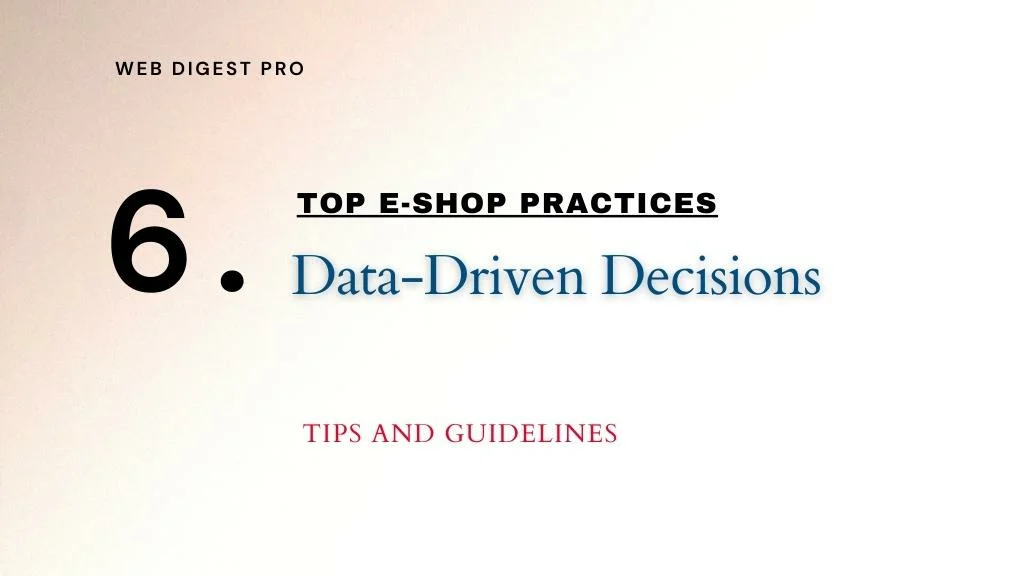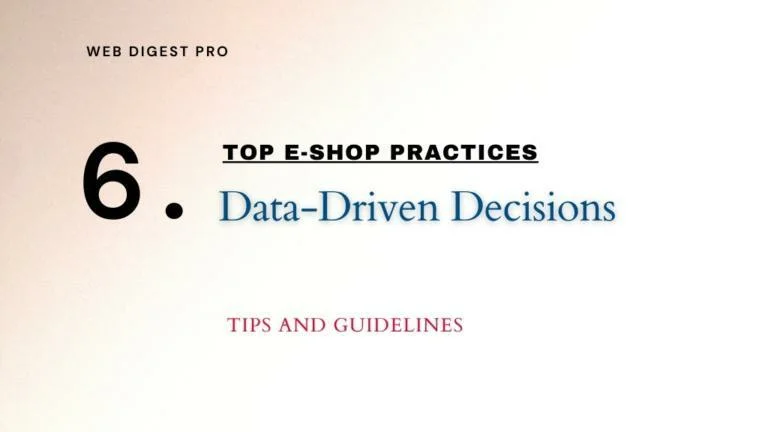Analytics and data-driven decisions are constantly gaining ground. The customer behavior when monitored improves conversion rates, and tracks sales effectively. This article explores key strategies for utilizing analytics in e-commerce, focusing on customer insights, conversion rate optimization, and sales tracking. These strategies help e-shop owners to make informed decisions, enhance user experience, and achieve their business goals.
The Complete Series of Top E-Shop Practices:
- User-Centric Design
- Personalization
- Checkout Experience
- Performance Optimization
- Customer Support
- Data-Driven Decisions
- Marketing and Promotion
1. Customer Insights
1.1 Gaining Insights into Customer Behavior
The customer behavior preferences and purchase patterns can be analyzed after the data are collected from various sources, such as website interactions, purchase history, and customer feedback. E-shop owners can then understand what drives customers decisions and tailor their strategies accordingly.
The browsing patterns, when analyzed, can reveal which products attract the most attention. On the other hand, the purchase history helps to identify underlying trends. By combining this information, e-shops owners can optimize their offerings and marketing strategies to better align with customer interests. The overall customer satisfaction is thus improved.
1.2 Identifying Trends and Preferences
By examining purchasing trends, seasonal variations, and emerging preferences on product categories, businesses can adjust their inventory and boost their marketing to meet changing demands.
1.3 Optimizing Product Offerings
Adjusting product offerings ensures that e-shops are up-to-date to what customers seasonally want. By understanding which products are most popular and which are underperforming, decisions concerning the inventory optimize the stock products.
2. Conversion Rate Optimization
2.1 Monitoring and Analyzing Conversion Rates
One well-known technique is called Conversion rate optimization (CRO). It involves monitoring and analyzing conversion rates to identify areas for improvement. The conversion rates show the percentage of visitors who complete a desired action. The most important action is of course a purchase, but other actions like signing up for a newsletter can be indicative. By tracking these rates, e-shops can assess the effectiveness of their strategies and identify opportunities to enhance performance.
2.2 A/B Testing for Optimization
Another valuable method is A/B testing. It consists of optimizing various elements of an e-shop, including particular product pages, the checkout process, and marketing tactics. Tests on different elements determine which variation is more effective and yields better results.
For instance, an A/B test might be to compare two versions of a product page with different layouts or calls to action buttons. The results analyzed identify which version leads to higher conversion rates, thus achieving measurable improvements in increased sales.
2.3 Enhancing Sales Performance
To make an effective rate optimization targeting to enhanced sales performance, the percentage of visitors who complete an action must be examined. The testing in refining of the various aspects of an e-shop leads to better user experience, reduces friction, and boosts the conversion rates. This results in sales progress and higher revenue.
3. Sales Tracking
3.1 Implementing Sales Tracking
Key performance indicators (KPIs) such as revenue, average order value, and customer lifetime value materialize sales tracking. For a robust sales tracking system, the e-shop mostly analyzes the sales performance, a process which provides insights into the overall business health and growth.
3.2 Analyzing Key Performance Indicators
Regularly analyzing revenue trends reveals peak sales periods and potential areas for improvement. The average order value is a measure to identify opportunities for upselling and cross-selling. On the other hand, the customer lifetime values indicates the long-term customer engagement and retention.
3.3 Making Informed Decisions
While the decisions about the inventory depend on the sales data analysis, the pricing strategies are also important. By understanding the sales patterns and performance metrics, the overall profitability is improved and the revenue maximized. E-shop should be well-equipped to adapt to market changes for a sustainable growth.
Conclusion
Analytics and data-driven decisions are essential for optimizing e-commerce performance. By focusing on customer conversion rates and sales tracking, e-shops enhance their strategies for growth. An improved user experience and the ability to stay competitive add more value to the business.
Sponsored Links
Written by Dimitrios S. Sfyris, founder and developer of AspectSoft, a software company specializing in innovative solutions. Follow me on LinkedIn for more insightful articles and updates on cutting-edge technologies.
Subscribe to our newsletter!














+ There are no comments
Add yours